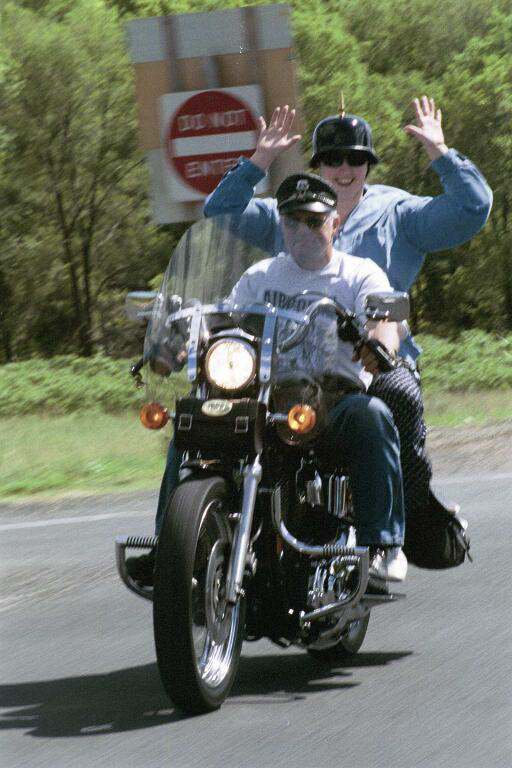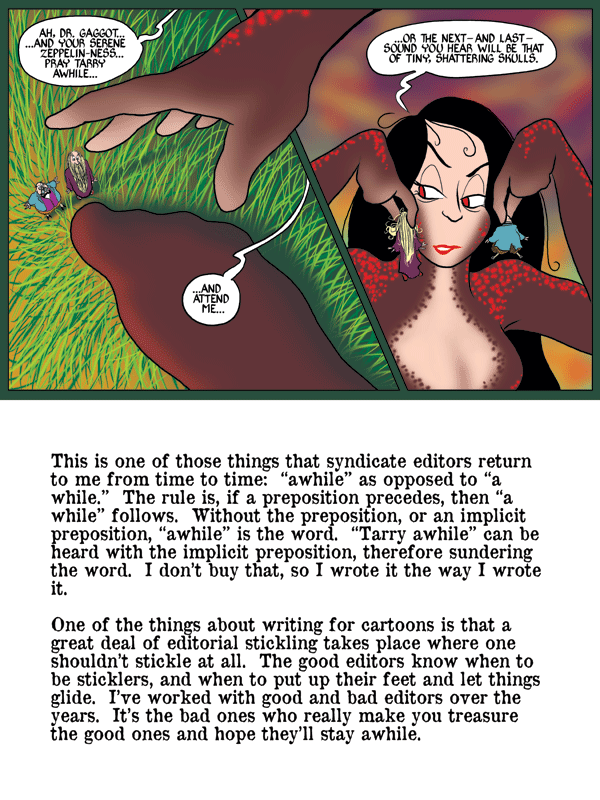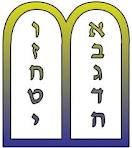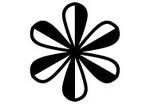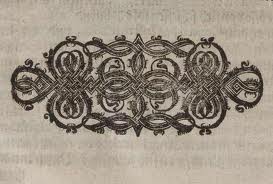Related relatives: that, which, who
Hebrew has a word, asher (accent on the second syllable, so ah-Sher), loosely translated at the back of a Hebrew grammar I have, as “that, which, who,” a woefully oversimplified definition of this complex word, but it fits perfectly as the title of today’s lesson. These three words are easy to get wrong in English. But when you get these three words right, you improve your writing.
That
You can use that in a whole bunch of ways. Mainly it’s a relative pronoun. It shows some connection between two things. Use it when the connection is important to the sentence. Do not use “which.”
Here is the motorcycle that my brother rides.
That is also a demonstrative: That man is riding a motorcycle. I remember my English teacher used to demonstrate multiple uses of “that” with this sentence:
That “that” that that man said was wrong.
The first and last are demonstratives, the third one is relative, and the one in quotes is a noun.
Which
Use which when the connection is not important to the structure of the sentence—when you have an aside. It is usually right after a comma.
Correct: Bob’s motorcycle, which is the black one, is a Harley.
Incorrect: Here is the motorcycle which my brother rides.
A lot of people use which when that will do, and I’ll probably never win this battle, but still, don’t. It’s pretentious.
Who
Use who when you refer to people; use that when you refer to things.
Correct: The tough-looking guy who just climbed onto his motorcycle is my brother.
Incorrect: The tough-looking guy that just climbed onto his motorcycle is my brother.
There you have it. In case you are wondering, my brother really does ride, and his bike is a Harley. Here he is, taking my wife for a ride.
Subscribe to this blog's RSS feed
A grammar what?!?
I’ve heard the term Grammar Nazi bandied about occasionally to refer to those of us educated and noble souls who prefer to have English spoken in a manner that doesn’t insult the speaker (or writer). I prefer the term Grammar Curmudgeon, myself, as indicating a modicum of warmth and friendly good humor toward the issue of communicating correctly.
Today I ran into a new name for those of us who know and care about correct English. Even though the context pokes fun at us, I think I like the term.
A word about the comic. Jeff Mallett writes Frazz, a strip about a wise and athletic grade school janitor, a precocious student and his classmates, and the rest of the school staff. The comics are often insightful, and the humor is sometimes—well, it helps to have a little education and be able to think, yourself. The astute reader will get that the joke above is based on an oxymoron and a reference to a folk tale about a foolish ruler.
A fine point of grammar in a comic
I have posted selections from the works of Brooke McEldowney before, and I probably will in the future. The fellow is a master of the English language, music, drawing, and complicated plots. This time he touches upon interactions with editors and how to use “awhile” and “a while” correctly; inadvertently giving me an easy post, for which I thank him by encouraging all of you to check out his comics, 9 Chickweed Lane and Pibgorn. They are really quite good.
Important or not?
I have been accused of superficiality occasionally because I advocate careful proofreading and making sure spelling and punctuation are correct. Regular readers know I subscribe to (and recommend) A Word A Day, which is 18 years old this week. Each day’s post ends with a quote, and today’s was from John Dryden’s writings:
Errors like straws upon the surface flow:
Who would search for pearls must dive below. -John Dryden, poet and dramatist (1631-1700)
To which I presumed to add a couplet:
But straw obscures the view below, my dear:
To plumb the depths, the surface must be clear.
On the surface, as it were, Dryden appears to advocate the position that we should look past superficial mistakes and go for the true intent of the writing. That might be true as far as it goes, but it’s still better not to have that straw interfering with your ability to plumb the depths. And John Dryden was no slouch at getting his grammar and spelling correct.
Two thoughts:
- Why would you want to distract someone from your pearls of wisdom with something so easily fixed? (Here’s an article I wrote on this subject a while back: Improve your Writing in One Step.)
- Carelessness advertises bad things about you. True or false, it reduces your credibility. To be blunt, if you are indifferent to mistakes in your writing, you look like a doofus.
I participate in Google+, and I have a circle that contains more than 500 fellow writers. Sometimes one of these folks will offer samples of their work for free on Amazon, and I always download these when I find them. One was so good I must mention it. The title is Ravenwood, and it’s by Nathan Lowell. I don’t know if it’s still free, but it’s worth whatever the price is. The protagonist is a middle-aged woman on her way to find a teacher, who is delayed on her journey by the needs of a small village. The setting is a non-technological kingdom with hints of magic. The story is vivid, exciting, and touching. I’d recommend it to anyone.
Another one of these freebies was so bad, it made me understand the difference between eroticism and pornography. (Joe: “Hey Moe—Do you have any pornography?” Moe: “Nah, I don’t even have a pornograph”) Erotic writing is well written. Pornography is badly written. I think porn merely describes the fantasies of the semi-literate writer, or follows a standard plot line to titillate a frustrated psychological appetite. The writer of this second freebie doesn’t appear to be very literate. Believe it or not, I’m going to quote some of it, a bit sanitized, all from within the space of a couple pages. (This is, after all, a family website.)
I won’t embarrass the author by repeating the pseudonym or the name of the short story:
Sabrina was Master’s protégé, he’d taken her on to teach her how to be a proper Dominatrix. [Comma splice. Should be two sentences. Don’t capitalize “dominatrix.” They got the spelling of “protégé” right, though.]
When we got to the living room, my heart sunk. [sunk? It’s “sank.” Fifth grade English]
I start taking off my clothes before she could even say a word. [It’s “started,” not “start.” I’m pretty sure this is a careless typo, because the rest of the story is set in the past—and I’m glad it’s over.]
Then the flogger hit me. I must of instinctively heard it, because I didn’t flicker so much as a muscle. [“must of“??? Stop torturing me! And you twitch muscles, not flicker them]
And this doesn’t cover lapses in characterization, logic, or flow.
I’ve never participated in the sort of stuff described in the story but it didn’t seem realistic to me. But then, I’m an innocent. And it’s probably pretty formulaic. I’m tempted to punish the writer, though.
Actually, if the writer of that story reads this, I’m sorry to have hurt your feelings. Unless you enjoy this sort of thing.
How to make a list
This lesson, class, is partly about typography and partly about technical writing. It has nothing to do with groceries. We have two kinds of lists. In HTML they go under the tags <ol> and <ul>, ordered list and unordered list. Before HTML, we called them numbered lists and bulleted lists. In both cases, each list item is its own paragraph. Yes, I’m aware of a third kind, items buried in the narrative of a paragraph, with or without numbers. Today we’ll ignore that kind of list. We have several schemes for numbering items in a list, particularly numbers or letters, and a dozen variants on outlining, ways to show levels of indentation and subordination. Here’s the key rule for numbered lists:
Never use a numbered list unless the order of the items in the list is important, or unless the number of items in the list is important.
The Ten Commandments is an example of that second kind of numbered list. Even then, numbering them didn’t quite solve the problem. Look up the Ten in a Catholic Bible and in a protestant Bible. The numbering is slightly different. Betcha didn’t know that, didja?
The most common reason to number a list is because you’re describing steps, giving instructions. You’re supposed to preheat the oven while you prepare the other ingredients, so that instruction is often first, even though you might not actually use the oven until later. Here are basic rules on how to write instructions in a list:
- Tell a single thing to do in each step; use the imperative.
- Tell what happens if the reader follows the instruction correctly. Use the present tense.
- Show a picture that shows the correct result.
Sometimes two things go together so naturally that they count as one (“Type your name and press Enter.”) The result doesn’t have to be a separate sentence; if the result flows naturally enough, it can go after the instruction in the same sentence. (“Put your hand over your heart to show sincerity.”) And sometimes you can’t think of a way to picture what you just told your reader to do; you can leave the picture out.
If you can, break up the instructions so you never have more than nine steps.
Three don’ts:
- Never start an instruction with the results of the previous step.
- Never put the result ahead of the instruction.
- Never put what not to do in an instruction. Put proscriptions in an aside, note, caution, or warning.
And that leads us to bulleted lists. Bullets are small shapes that make it easy to see the beginning of each list item. Sometimes bullets are called dingbats, and sometimes dingbats are called ornaments. Bullets are the simplest of the three, and ornaments are too fancy to use as bullets; they are used for decoration, to signify the end of a section of text, for example. Google “typographic ornaments” to see what people did before they had television.
Now for a bit of typography. How much should you indent a list item? That’s a matter of taste. I like to align the bullet with the left edge of the paragraph above the list; many people like to indent the bullet the same distance as the bullet is from its list item. Just don’t overdo it. A quarter inch is a great plenty. How far apart should the list items be? A smaller distance (called leading, by the way, because lines of text used to be separated with strips of lead) than the distance between normal paragraphs. The list itself should be separated from the normal paragraphs by the normal paragraph amount. For example if your paragraphs are 12 points apart, start the list 12 points below the paragraph above, separate the list items by 6 points, and resume the normal paragraphs 12 points after the last list item. There’s more to all this, but that should get you started.
